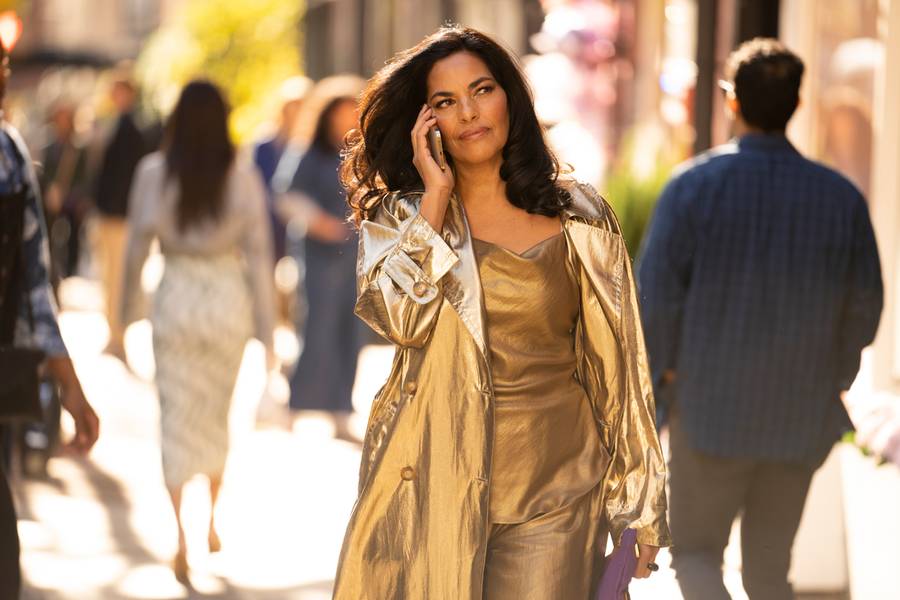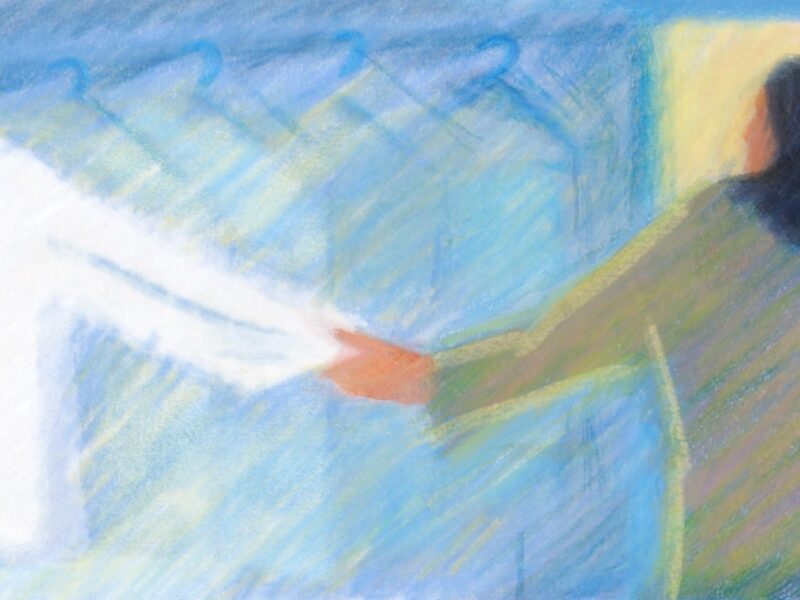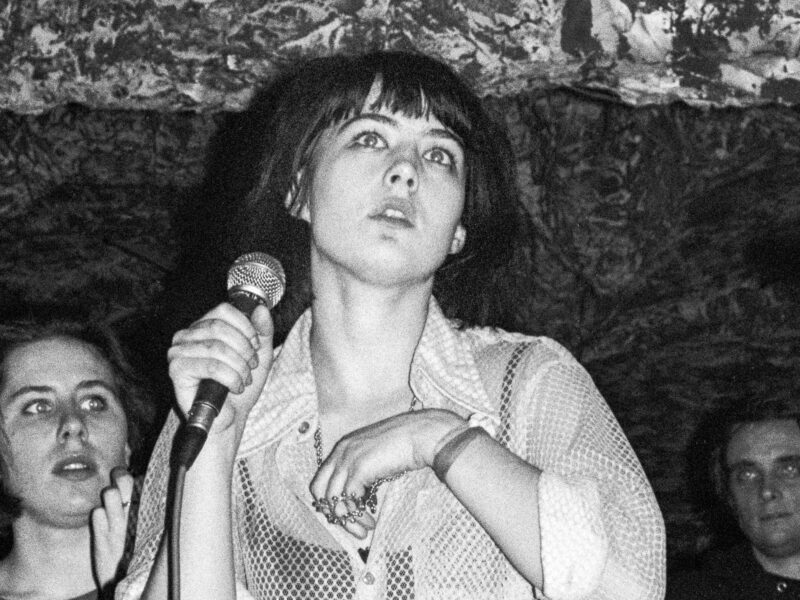We need narratives that explore our shared problems and point the way toward collective liberation, but South Asian stories in U.S. popular culture haven’t kept pace with our new political realities.
Until 9/11, I didn’t feel a strong need to see my ethnicity represented in American pop culture. Growing up in the U.S. as South Asian was an experience in cultural invisibility, but not one that was necessarily undesirable. GenXers and older Millennials came after the hippie era, which convinced mainstream American culture that Indian culture could be summarized with yoga, incense, and kirtans, and there was little in the 1980s and 1990s to dispel those lingering narratives, or to ground South Asians authentically in popular culture. What we did see, whether it was Amy Irving in brownface playing an Indian princess, or Apu in The Simpsons, was often problematic and unrepresentative.
This situation changed over the last two decades. The first film I saw in theaters after 9/11 was Mira Nair’s Monsoon Wedding, which played at New York City’s storied Paris Theater, right outside the Plaza Hotel. Steeped in joyous chaos and vitality, the film, which is set in New Delhi, portrays an exuberant, extended upper middle class family gathered at the home of the bride’s family to celebrate her arranged marriage to a suitably handsome Indian doctor. Tinged with a hint of tragedy and immersed in love for both family and the kind of colorful Desi spectacle Pico Iyer calls a “marigold tapestry,” the film was an escape, a connection, and a salve in the recovering-but-still-desolate city. I hadn’t realized how much I needed it.
The only previous occasion on which I’d had an inkling of this need was while watching Nair’s 1991 film Mississippi Masala. This bittersweet and boundary-breaking love story stars Denzel Washington as Demetrius, a Black American man from a working class background, and Sarita Choudhary as Mina, an Indian woman born in Uganda. After Idi Amin expelled all the “foreigners” in 1972, Mina, who at one point in the film says she has never been to India, lives with her family in a small-town Mississippi motel owned by relatives who represent the great wave of migration from Gujarat to the U.S. during the 1980s and 1990s. The film pulsates with the same vibrancy that would be seen in Monsoon Wedding 10 years later.
But while Monsoon Wedding tells a deeply Indian story, Mississippi Masala tells a deeply American one. As Durba Mitra writes in an essay celebrating the film’s 30th anniversary, Mississippi Masala is a “love story wrapped in histories of postcolonial displacement, settler colonialism, and the shadows of Jim Crow, offer[ing] an account of the cruel circuitous routes of displacement and migration to the American South.” The film is one of the first mainstream American artworks to show both the discrimination experienced by the Indian-American diaspora, and the anti-Black racism the community directs at the Black people amongst whom they now live. Even 30 years later, it stands out as a political inquiry that interrogates what it means to seek liberation through young, urgent love across race, class, and culture.
A scene from ‘Mississippi Masala,’ Mira Nair’s 1991 film starring Sarita Choudhury and Denzel Washington.
Mitra notes in her essay, “The Indian diaspora in the U.S. has always been imagined in the American political landscape as a people neither here nor there.” South Asians who were either born in the U.S. or came as children following the 1965 Immigration Act were so few in number—even today there are only 5.4 million—that, Mississippi Masala aside, the microculture of American-born GenX Desis made little more than a blip in popular culture. On the one hand, this environment provided a kind of freedom in which we could try to shape culture and community without a spotlight. We could try to form bonds of solidarity in the face of entrenched political, cultural, religious, national, and caste lines that separated our peers on the subcontinent and were embraced by diaspora members who clung to their xenophobic, racist, or communal ideologies. On the other hand, the community could be insular and, existing in what Shilpa Davé calls “ambiguous racialized space,” both the victim and the perpetrator of discrimination.
Events in post 9/11 America made clear the need for South Asian stories with political and cultural specificity in mainstream culture. The months immediately after that terrible day were a period of intense discrimination, surveillance, violence, and Islamophobic and anti-immigrant policies. As Representative Pramila Jayapal said, “9/11 changed what it meant to be Arab, Muslim, or South Asian in this country.” Jayapal delivered her remarks during the first ever Congressional hearing on Discrimination and Civil Liberties of Muslim, Arab, and South Asian communities, held over twenty years after 9/11. Finally.
Representation in this political context matters. Rashad Robinson, the prominent civil rights activist, rightly warns us not to mistake presence for power: Being in a room doesn’t necessarily establish a direct line to decision making. None of us relates to the experience of being South Asian in the same way, and none of us should have to represent any or all of the rest of us. But one of the adverse effects of underrepresentation is to convince members of a minority community that they lack power within the dominant culture—that access and opportunity are limited, and their own stories will be unheard or filtered through stereotypes. In an essay about Lisa Ling’s food docuseries on Asian food in the U.S., Marina Fang writes: “Asian Americans often start from the default position of being “the other.” We have to explain ourselves, usually to a white audience.” In this kind of cultural environment, the need to present perfect or one dimensional characters—a pillar of the toxic “model minority” myth—takes root, and division and misunderstanding flourish.
Presence and visibility may not be the entire solution to these problems. They are nevertheless crucial levers toward power. And the years between 9/11 and the 2016 U.S. election—marked by cross-MENASA community organizing to fight discrimination and state violence —gave rise to a mini renaissance of South Asian content that explored and played with the place South Asians occupy in the U.S. cultural landscape.
Rampant xenophobia in the post-2016 world makes the need for solidarity, representation, and narrative shift even stronger. But the South Asian diaspora community has splintered over the past few years. Rising authoritarianism—from Trump to Brexit to Modi—emboldened Hindu nationalists in India and around the world, greatly exacerbating existing caste and religious discrimination. On the international stage, South Asians have been slow to rise in defense of our common humanity. It feels like a fraught time to embrace South Asian identity and a deeply precarious time around the world. We desperately need narratives that explore our shared problems and point the way toward collective liberation, but South Asian stories in U.S. popular culture haven’t kept pace with our new political realities.
I’ll admit to some satisfaction these days at seeing so much South Asian content made by people in front of and behind the camera. South Asian actors are playing a variety of dynamic, complicated, and sexy (but not exoticized) characters in content ranging from the color-blind casting of Bridgerton and The Green Knight, to the coming-of-age stories in Never Have I Ever and Spin, to superheros (that most American of genres) as seen in Eternals and Ms Marvel.
In this landscape, the character that most closely represents me, at least demographically, is Seema in …And Just Like That. Played by Sarita Choudhary (who also played Mina in Mississippi Masala), Seema is a GenX New Yorker, unapologetically sexual, self-made, fabulous, and untethered to familial or cultural expectations. She is refreshing. I understand why the show disappointed many viewers with its portrayals of aging, race, class, consumerism, gender, and sexuality, but a small part of me enjoyed watching a glamorous brown woman of a certain age chewing up the scenery.
But reality these days always creeps in. It’s hard to get past what is happening politically in the South Asian community and watch even escapist content with unadulterated joy. As I watched her, I couldn’t help but wonder: Is Seema enough?
Her character comes from what appears to be an upper caste Hindu background and lives the life of a one percenter in Manhattan, with a private driver and a luxurious wardrobe of exceedingly expensive designer clothes, shoes, and handbags. She sits in privilege and has origins in what is now the oppressor class in India. As do I. Not all South Asians are privileged—far from it, especially in terms of race, class, or caste. But for a community that is small in numbers, we have a relatively high level of power and privilege. This is what Seema, as fabulous as she is in some ways, also represents.
In the current state of our world, confronting society from our perspective as South Asians should require us to interrogate where we sit along the spectrum of power. What is our collective responsibility? Where do we have social power, and where do we use it for good? We need rich, complex stories that explore these questions. We need more than a few of these stories every decade.
I want to know what Demetrius and Mina would do in our world. That’s the story I’m looking for now. We are living in monstrous, devastating times. We need lightness, escape, and joy—and a more inclusive roster of characters that will shape the way people perceive one another. Even more so, we need to tell stories of solidarity.



